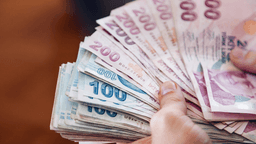TEPAV's study indicated that meat imports cannot be the solution and stressed the need for market regulation to prevent a major crisis.
ANKARA- TEPAV underlined that the recent rise in meat prices resulted from the wrong policy decisions in 2007 and stated that meat imports cannot solve the problem.
TEPAV policy note "How must the increase in meat prices be interpreted?" written by Economic Policy Analyst Sarp Kalkan and Research Associate Hüseyin Ekrem Cünedioğlu is published. Stating that the purpose of the note was to examine the movements in price and production in the red meat sector and set forth the reasons for the rapid increase in stock breading and red meat sectors, the note said: "This way the note will also give clues on how the meat market should be regulated in the coming period."
Meat prices must be analyzed together with animal feed and milk prices
The note emphasized that the balance between feed prices and milk prices determines the supply of red meat in Turkey and maintained:
"To put it differently, farmers trying to secure a certain level of income flow make a preference between producing milk and producing milk. As the amount of animal feed that can be bought in exchange for one liter of milk decreases, milk production becomes less profitable. This prevents milk production and makes stock breeders prefer slaughtering and meat production. Similarly, in periods where relative falls in feed prices occur, meat production deteriorates while milk production increases. For instance, in 2004 when price of feed and milk increased by 19 percent and 11 percent respectively, milk production rose only by 1 percent and production of red meat grew by 22 percent. On the other hand, in 2005 when animal feed prices dropped, production of red meat decreased and production of milk increased."
Underlining that this mechanism applied also for the price movements by the second half of 2009, the note said: "Along with the impact of the drought in 2006, feed price rose by 22 percent in 2007. However, despite the elevation in input costs, the increase in milk prices was limited (9 percent). Therefore, milk production ceased to be profitable and the amount of slaughtered animals increased by 31 percent. In 2008 and 2009 red meat production diminished by 16 percent and 14 percent, respectively."
The note suggested that as a result of these developments, rises in meat prices were observed by the second half of 2009 due to supply shortages.
The market should be regulated in order to prevent a more major crisis in livestock sector
TEPAV evaluated that recent efforts to hold down meat prices by allowing meat imports also provide short term solutions and keep the ambiguities about policy intact. The note stressed that before making such decisions, dynamics and pricing mechanisms in red meat, milk, feed, and even in white meat sectors must be reviewed carefully and maintained: "It must be noted that with a mechanism where prices of meat and milk remains constant or drops while feed prices increase, number of livestock animals can drop gradually, which might in turn intensify import dependence in meat and milk markets. This is why Meat and Fish Authority, when executing the authority to import must consider not only how meat prices can be reduced but also how the future of the livestock market shall be. It is of great importance to design a livestock sector policy, which will regulate all markets and involve balancing mechanisms to employ in case of distortions in pricing."




